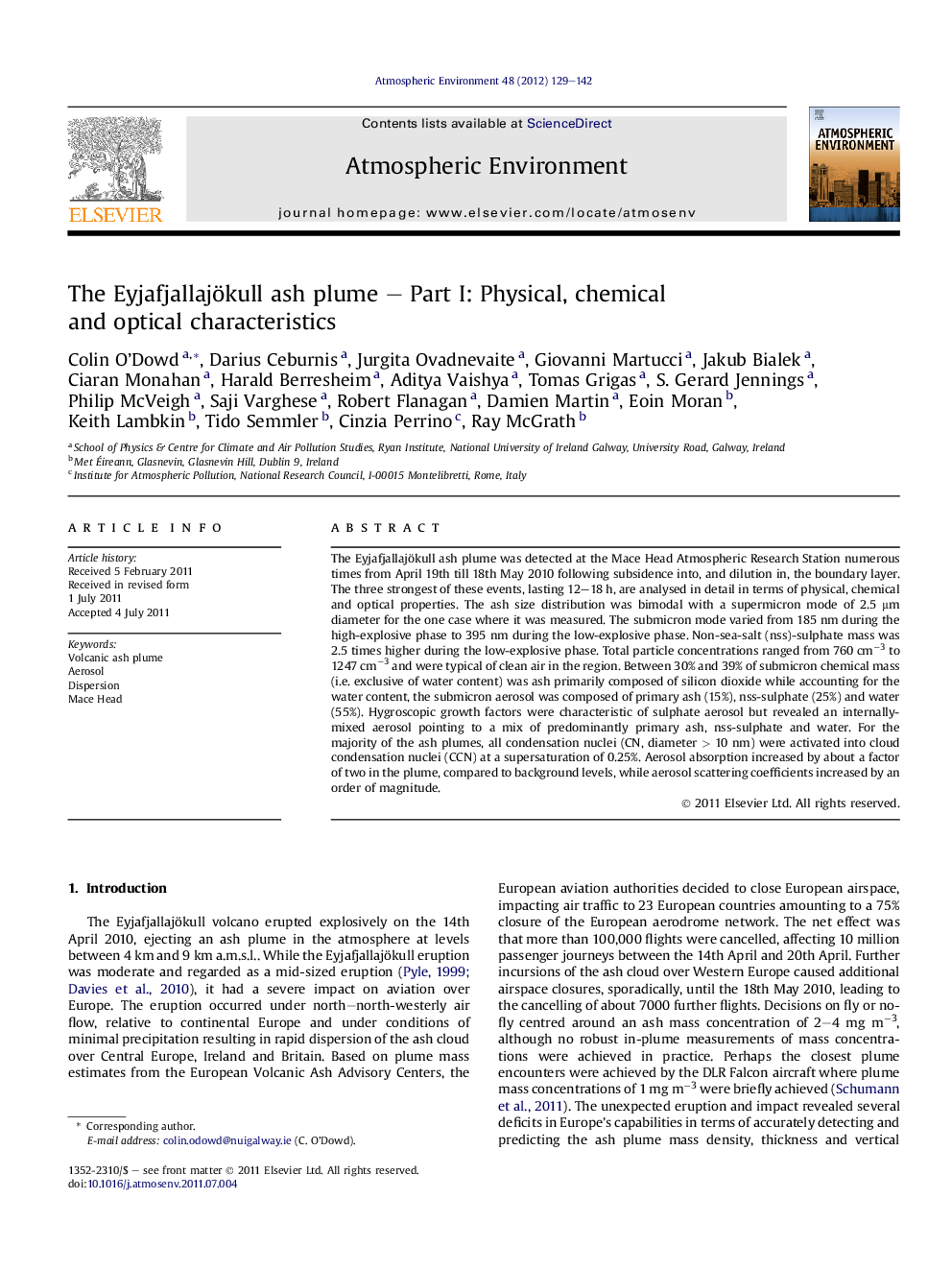| Article ID | Journal | Published Year | Pages | File Type |
|---|---|---|---|---|
| 4439122 | Atmospheric Environment | 2012 | 14 Pages |
The Eyjafjallajökull ash plume was detected at the Mace Head Atmospheric Research Station numerous times from April 19th till 18th May 2010 following subsidence into, and dilution in, the boundary layer. The three strongest of these events, lasting 12–18 h, are analysed in detail in terms of physical, chemical and optical properties. The ash size distribution was bimodal with a supermicron mode of 2.5 μm diameter for the one case where it was measured. The submicron mode varied from 185 nm during the high-explosive phase to 395 nm during the low-explosive phase. Non-sea-salt (nss)-sulphate mass was 2.5 times higher during the low-explosive phase. Total particle concentrations ranged from 760 cm−3 to 1247 cm−3 and were typical of clean air in the region. Between 30% and 39% of submicron chemical mass (i.e. exclusive of water content) was ash primarily composed of silicon dioxide while accounting for the water content, the submicron aerosol was composed of primary ash (15%), nss-sulphate (25%) and water (55%). Hygroscopic growth factors were characteristic of sulphate aerosol but revealed an internally-mixed aerosol pointing to a mix of predominantly primary ash, nss-sulphate and water. For the majority of the ash plumes, all condensation nuclei (CN, diameter > 10 nm) were activated into cloud condensation nuclei (CCN) at a supersaturation of 0.25%. Aerosol absorption increased by about a factor of two in the plume, compared to background levels, while aerosol scattering coefficients increased by an order of magnitude.
► The physico-chemical characteristics of the Eyjafjallajökull ash plume are reported. ► The submicron ash particles are composed of sulphuric acid, water and silicon dioxide. ► The ash particles are highly water soluble with a very high CCN efficiency.
